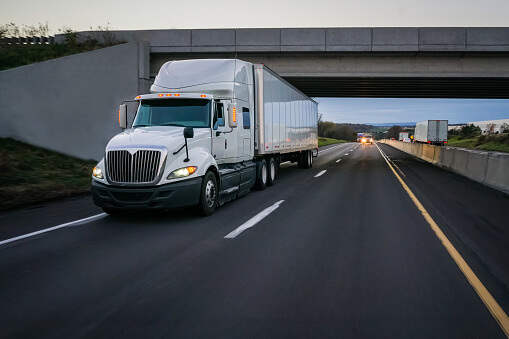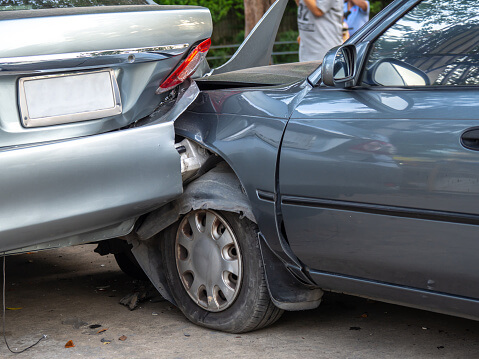We share the road with them, these massive rigs that seem to go on for blocks. They can appear threatening, dangerous even, as they barrel down the highways on their 18 wheels, heading off to deliver more than 80 percent of the goods Americans want and need.
The Bureau of Transportation Statistics reports that the total number of freight transportation-related fatalities declined by 23.8 percent from 2000 to 2015. In addition, the U.S. Department of Transportation’s Federal Motor Carrier Safety Administration is making significant efforts to increase commercial motor vehicle safety.
All good news, but that doesn’t quite calm your anxiety when you see a tractor-trailer seeming to wobble haphazardly between lanes at a fair rate of speed. Because of their size, tractor-trailers are more likely to inflict fatalities in the case of a collision, regardless of who is at fault.
According to the Insurance Institute for Highway Safety Highway Loss Data Institute, a total of 3,986 people died in large truck crashes in 2016. Of those deaths, 66 percent were occupants of passenger vehicles. By comparison, the National Safety Council reports that as many as 40,000 people died in motor vehicle accidents.
Collision-avoidance
According to the New York Times, many truck accidents involve rear-ending vehicles that have stopped or slowed because of accidents or roadwork. Technology to prevent or lessen the impact of such crashes is available from all of the manufacturers of heavy trucks in North America. Yet, only about three percent of the Class 8 trucks – the heaviest ones, including tractor-trailers – are equipped with any version of this collision avoidance, according to safety advocates. But the United States trucking industry has largely avoided using the safety technologies available for vehicles sold here because of the cost.
Interviewed in Country Living magazine, a veteran truck driver who has driven more than a million miles over 22 years said:
“Driving directly next to a tractor trailer can be fatal.”
He called the area next to the truck as a “kill zone.”
“Do not – and I can’t stress this enough – ride alongside a truck – ever. If the truck loses control or has to change lanes quickly, you’re going to get crushed because the truck has nowhere else to go.”
Commercial drivers have blind spots on both sides. It is especially important to stay out of these zones when a truck is turning, backing up or changing lanes.
Things to Remember:
- If you have to pass a truck, do it as quickly as possible. If you need to get past a truck, make sure you are far enough back to see the driver in the mirror. Signal and pass on the left, taking care not to linger in the driver’s blind spot.
- Stay at a safe distance. If the truck blows a tire, you could suffer serious injuries, plus damage to your vehicle if you’re too close. Trucks make wide right turns, so if you are in the blind spot when a driver needs to make a turn, you could be in big trouble. Also, if you’re driving too closely behind a truck and fail to stop in time or are hit from behind, your vehicle could slide under the truck, a particularly devastating type of accident called an underride.
- Give trucks time to stop. Compared to a 3,000- to 4,000-pound car, a rig can legally weigh as much as 80,000 pounds. A fully loaded truck traveling 65 miles per hour will take almost the length of two football fields to stop – in ideal conditions. Avoid cutting off trucks and leave enough room between you and any truck behind you for safe sudden stops.
- Be aware. Any time you are on the road, whether you are near a big truck or not, keep your full attention on the road. Distracted driving is dangerous. When you are alert and aware, you can be sure that you’re doing your part to stay safe on the road.
At Coplan + Crane, we will fight to hold negligent parties accountable for your injuries if you were involved in an accident with a large truck.

















